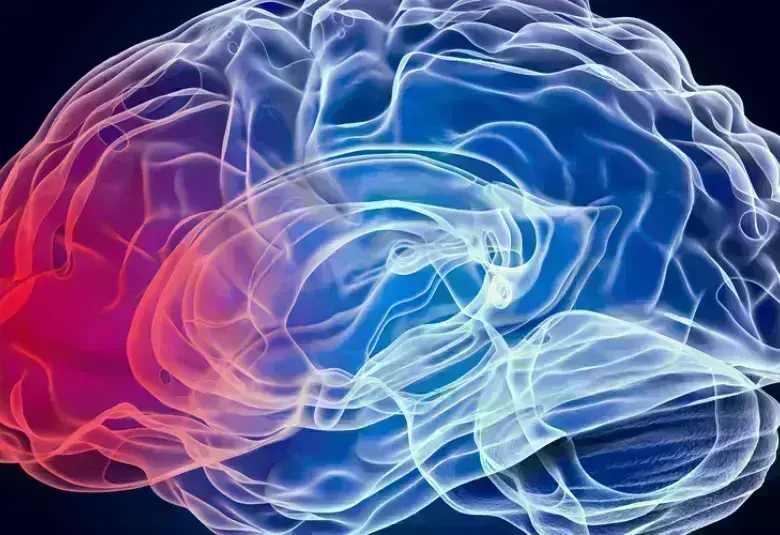Migraine is a highly prevalent and debilitating neurological disease that occurs with painful attacks and additional incapacitating symptoms such as nausea and allodynia.1 Opioids are commonly prescribed for acute analgesia associated with migraine.1,2 However, repeated opioid use may result in opioid-induced hyperalgesia (OIH) and migraine chronification or medication overuse headache (MOH).3,4 In a scientific abstract presentation at the American Headache Society 2024 annual congress, Elizaveta Mangutov, a graduate research assistant in the Amynah Pradhan Lab at Washington University School of Medicine in St. Louis, Missouri, presented recent scientific findings exploring the potential for targeting the PACAPergic system as a migraine treatment and prevention strategy.
Opioid use and its association with chronic migraines
Opioids can provide acute migraine pain relief, but their repeated use is associated with risk for opioid-induced hyperalgesia (OIH) and progression to chronic migraine or medication overuse headache (MOH).1,3,4 MOH is a secondary headache disorder with at least 15 monthly headache days that develop as a result of consistent overuse of one or more acute headache medications for more than three months.4 Treatment for MOH primarily requires preventive strategies and medication cessation but this may be challenging to achieve, and studies show that ~20–50% of patients restart their medications again within the first year of opioid cessation.5,6
There is an unmet need for better treatments for MOH and OIH
The PACAPergic system
The Pradhan Lab has conducted several preclinical experiments investigating the PACAPergic system in OIH and opioid-facilitated MOH. One of the early studies involved proteomic analyses to identify target proteins in the brain involved in OIH and MOH.7 Their findings showed that upregulation of pituitary adenylate cyclase activating polypeptide (PACAP) was a leading candidate.7
PACAP is a therapeutic migraine target of active research interest
PACAP38 is a small neuropeptide known to bind three distinct G-protein coupled receptors VPAC1, VPAC2, and PAC18 with high affinity for PAC1.9 Mu opioid receptors have been shown to be highly co-expressed with PACAP and PAC1 in key pain processing areas of the brain,10 and PACAP has emerged as a therapeutic migraine target that is known to be endogenously elevated during migraine attacks.11,12 Ms. Mangutov highlighted a series of preclinical experiments her lab performed in mouse models to further explore the role of PACAP and PAC1 receptors in OIH and MOH.
Role of the PACAPergic system in headache and migraine development
The first experiment showed that PAC1 antagonism blocks nitroglycerin (NTG)-induced allodynia, highlighting an important role for PAC1 receptors in this model.7
Next, they investigated the role of PAC1 receptors in an OIH model where mice were treated with vehicle or morphine twice daily for 4 days.7 OIH mice had increased pain sensitivity relative to the control group.7 However, PAC1 antagonism reversed this effect and returned pain sensitivity in OIH mice to control levels.7
Chronic opioids act via PAC1 signaling to cause pain, which can be blocked with PAC1 antagonists
Can PACAP antibody treatment alleviate pain in opioid-facilitated MOH?
The next set of experiments explored if PACAP antibodies could treat the increased pain sensitivity in an opioid-facilitated MOH model that reflects opioid interactions with migraine pathophysiology.10 Treatment with the PAC1 antagonist inhibited allodynia in the morphine+NTG combination group but had no effect on the placebo group.10 In a similar experiment designed to investigate whether PACAP antibody treatment could block opioid-facilitated MOH, the PACAP antibody effectively reduced pain sensitivity in mice exposed to morphine+NTG, thereby showing promising therapeutic potential for blocking PACAP signalling.
PACAP antibody treatment alleviated pain in a model of opioid-facilitated MOH
Can PACAP antibody treatment prevent OIH and opioid-facilitated MOH?
The final set of experiments (unpublished) explored whether PACAP antibody treatment could prevent the development of OIH and opioid-facilitated MOH. The OIH model was used to compare the preventive effects of PACAP antibody treatment against a migraine prevention treatment with demonstrated efficacy, namely anti-calcitonin gene-related peptide (CGRP) treatment. Treatment with the PACAP antibody was similarly effective in preventing pain in morphine/NTG treated mice as the CGRP antibody treatment, providing translational evidence of the potential for anti-PACAP treatment to prevent opioid-facilitated MOH.
Blocking PACAP was similarly effective as blocking CGRP in preventing OIH and opioid-facilitated MOH
Conclusions and future directions
This series of experiments from the Pradhan Lab showed that chronic opioids lead to allodynia and inhibition of PAC1 receptors effectively blocked established chronic migraine and OIH. Importantly, these findings suggest that PACAP antibody treatment can be effective in reducing and preventing development of OIH and opioid-facilitated MOH in a murine model, and supports further investigations on PACAP treatment in future human clinical trials.
Our correspondent’s highlights from the symposium are meant as a fair representation of the scientific content presented. The views and opinions expressed on this page do not necessarily reflect those of Lundbeck.




